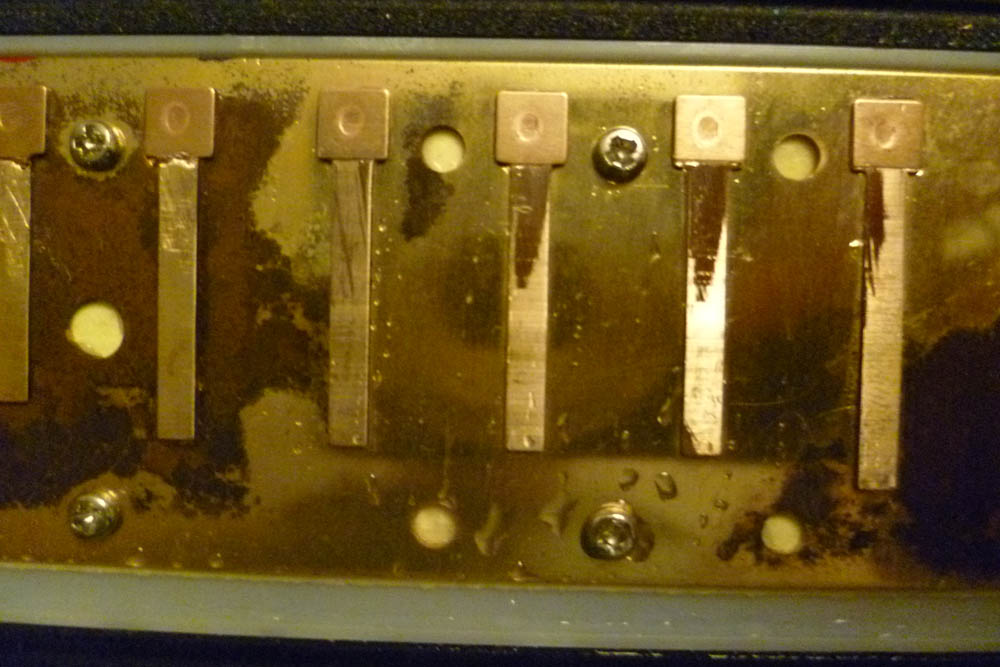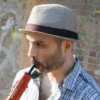Improving responsiveness of certain keys
Tagged: gapping, hohner, Melodica reed plate adjustment
- This topic has 12 replies, 5 voices, and was last updated 10 years ago by
 Alan Brinton.
Alan Brinton.
-
AuthorPosts
-
February 25, 2014 at 4:19 pm #1894
 BenjaminParticipant
BenjaminParticipantHi all,
I have a Yamaha P32D, and it plays well except for 2 keys (F4 and F#4) which take a large amount of effort to play.
The reeds do not sound with normal blowing and when they do sound, it’s very loud and throws the whole song out of whack…I have opened the melodica and found the relevant reeds to have rather large gaps, reduced the gaps slightly but the problem still persists.
Please share your advice on how I can remedy the issue, as I am new to reed instruments.
February 25, 2014 at 5:25 pm #1895 RodrigoParticipant
RodrigoParticipantHi Benjamin, I have the same melodic that you and I had the same problem. What I did to fix it was to reduce the opening of the reeds leaving a little space, but not completely close. Doing this responsiveness Reeds improve much. I fit so all reeds a Yamaha P32D a P25F and Angel AM37K2. Hopefully my advice will be useful. Sorry about my english, i am a Chilean guy. Greetings.
February 26, 2014 at 1:36 am #1897 BenjaminParticipant
BenjaminParticipantHi Rodrigo, thanks for the advice, I will try reducing the gap and report back here.
Do you only do it for the affected reeds? Or will doing it for each reed improve the instrument as a whole?February 26, 2014 at 2:02 am #1898 RodrigoParticipant
RodrigoParticipantHi Benjamin.
You have two options to adjust:
– Identify the canes that have poor response sounding instrument and require adjustment before opening and adjust these reeds.
– With open instrument visually identify which of the rods have a larger opening at all and make these adjustments.
I recommend the first option.
Also remember that it must be a minimum opening in the reeds you are setting, if you close it too much will have a similar response when the cane is very open.
In the example image, the reeds that your settings should look like the smallest cane image.
Good luck!
 February 26, 2014 at 12:09 pm #1899
February 26, 2014 at 12:09 pm #1899 BenjaminParticipant
BenjaminParticipantHAHA! It worked, thanks man.
February 26, 2014 at 12:33 pm #1902 RodrigoParticipant
RodrigoParticipantGreat video man, nice work. I am happy it worked. Enjoy your Yamaha P32D, it’s a jewel. Bye!
February 27, 2014 at 6:22 pm #1907 Alan BrintonParticipant
Alan BrintonParticipantExcellent discussion and very nice job on the video. I have two P-32Ds and had problems with one key (different keys) on each of them. Others have reported the same problem with the P-37D. It’s easy enough to take the P-32D apart, but I have had success in addressing the problem by alternately blowing and sucking the melodica with the offending key depressed. I suppose this may change the gap, though the subjective feeling is that I’m loosening the key up. I do this now with other melodicas when a key seems to have gotten out of tune, and I find that I can work the reed a little bit to change the intonation. I agree with your assessment of the P-32D, Rodrigo.
February 28, 2014 at 2:06 am #1908 RodrigoParticipant
RodrigoParticipantAlan, I love the P32D, has a high quality in their reeds and are really anti-corrosive. The material and function keys are outstanding. The sound is crisp and stable. It is a pro quality instrument with a beginner price.
I take this opportunity to consult with you the following situation:
One of the melodic I have is the P25D (current version P25F), the melodica is rightfully the little sister of the Yamaha Pianica. In the review of the site is classified as beginner melodica, Question: Is this Because the Least amount of keys? having the same good quality as his sisters 32 and 37.
Maybe they should change their classification considering this. Thank you very much for your comment. Greetings.February 28, 2014 at 3:03 pm #1912 DarenKeymaster
DarenKeymasterGreat discussion guys! And what a great video Benjamin. Thanks for taking the trouble to make it. The classifications are for potential buyers/choosers of melodicas to get an overview of a melodica without having to go through each individual description. I can update classifications as and when members give me information, such as in this case with the P25D…
March 2, 2014 at 11:40 pm #1919 LowboyParticipant
LowboyParticipantOne thing I observe in my Hohners is that the reed gap is proportional to the reed size. As the reeds get larger, so does the gap. I think reducing the gap on all reeds to make them the same would be a mistake.
I have learned the hard way that you must be very careful when adjusting reeds. Where you do the bending along the length of the reed can impact how easily the reed bends I think. I have tried adjusting some low note reeds that got out tune due to blowing too hard to bend notes. By adjusting the reed gap, I got the notes back in tune, but now the notes bend too easily compared to the surrounding notes. I am still learning about the relationship between reed gap and bending point on the reed versus tuning and ease of bending.
Lowbow
March 9, 2014 at 10:31 pm #1953 LowboyParticipant
LowboyParticipantOne of the Hohner websites has videos on adjusting the reed offset (gap), tuning, and making repairs on chromatic harmonicas. Much of the information is applicable to melodica reed plates.
The video on adjusting the reed offset to fix problems or obtain the response that you want is very well done. See it here:
http://us.playhohner.com/service/hohner-service/harmonica-service/#video_23
Regards,
Lowboy
April 21, 2014 at 1:15 am #2120 BenjaminParticipant
BenjaminParticipantI did notice some issues in the lower notes as a result of decreasing all the reed gaps, when I try to get more volume, the reed goes flat and jams up more easily…
I have since raised the lower reeds without any loss in responsiveness, so I guess making the gap that small had no practical benefits.
April 21, 2014 at 2:42 pm #2121 Alan BrintonParticipant
Alan BrintonParticipantThanks for following up on that, Benjamin. I’ve had a similar experience with a few keys on my Yamaha P-32F. But your earlier comments encouraged me to experiment a bit more with gapping, which is a good thing.
-
AuthorPosts
- You must be logged in to reply to this topic.
